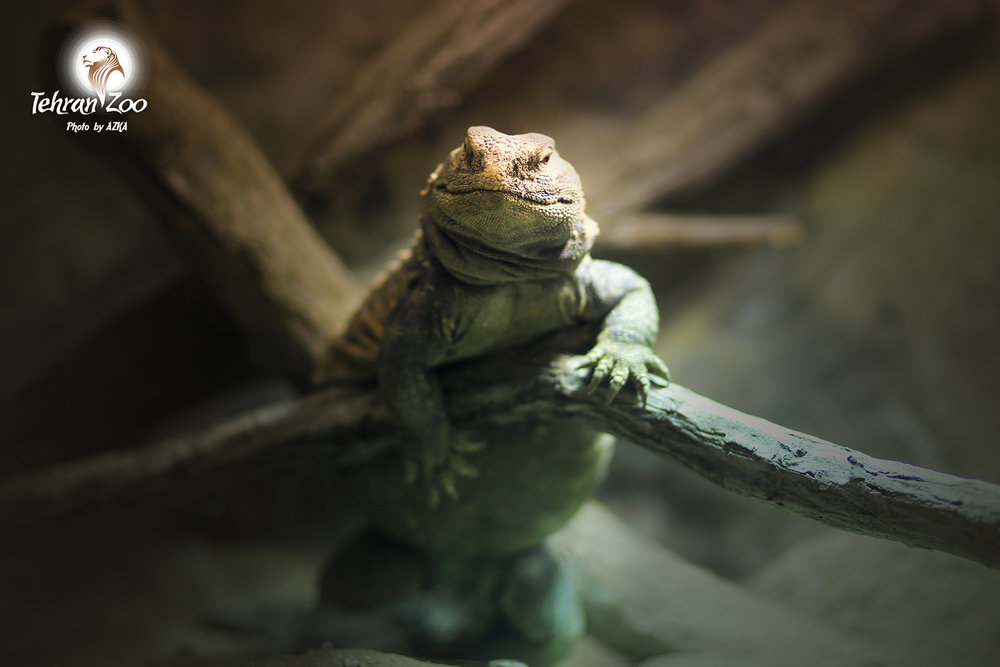Mistery of lizards

Southwestern Kermanshah, Ilam, Khuzestan, Lorestan, and Bushehr provinces are considered as the geographic range of Mesopotamian spiny-tailed lizard in Iran.
They apparently are confined to the Mesopotamian plain and Zagros foothills of Iraq and southwestern Iran. The gulf coastal plain of southwestern Iran where the sea level is about 300m seems to be suitable for them. There are also some reports from eastern Iraq and Kuwait that still needs to be confirmed.
Identification keys of Mesopotamian spiny- tailed lizard consist of whorls of spinous scales on upper surface of tail separated by small scales; 30- 40 transverse rows of scales on middle of belly in space equal to length of head; back with transverse series of large pointed tubercles; no enlarged denticulate scales along ear margin; 3-5 preanal and 11-15 femoral pores on each side; and finally series of enlarged scales on nape not surrounded by subgranular scales as Professor Steven C. Anderson in “The Lizard of Iran” said.
Description
Spiny- tailed lizards mostly occur in bushes, and rock crevices because these places considered as their main habitat. They are mostly herbivorous, feeding on the leaves, stems and seeds of herbaceous plants; anyhow, sometimes eat insects including crickets, grasshoppers, and ants. At this picture you can see beautiful and rotund Mesopotamian spiny- tailed lizard of Tehran Zoo. These large lizards as you can see, are exceeded in size. They are gentle animals and will not bite even during capture but you must remember that they cannot be a pet.
Old scientific stories
An updated and much more thorough systematic synopsis of the vertebrates in Iran, exclusive of fishes, was that of Blanford as Professor Steven C. Anderson said. William Thomas Blanford, a geologist and naturalist, was appointed to the Geological Survey of India in 1855. He also visited Iran and his travel path started from Gwadar through Baluchistan and southern Iran as far west as Shiraz and then to Tehran via Esfahan in 1872. Blanford did his exploration journeys with Major Olivier B. St. John. He (St. John) speaks of his bull terrier’s mouth being severally cut following an encounter with several Mesopotamian spiny-tailed lizards in the Bushehr area. They showed no fear of the dog and one even attacked despite the dog killing two of the group. Blanford also noted that they are gentle and will not bite even during capture because they are just herbivorous lizards. According to Major St. John, near Bushehr they dig their burrows in areas of sandy clay, where there are small bushes such as wormwood or barilla.
Spotting Mesopotamian spiny-tailed lizard
Spring (last of Farvardin) and summer days (till last of Mordad) are best times to see Mesopotamian spiny-tailed lizard in Khuzestan province especially when no other reptiles are active. When they fear, rapidly scape to dens. They use their heavy spiny tails for defense and also for showing aggressive behavior. They can lay eggs but the size of eggs are small. As IUCN (International Union for Conservation of Nature and Natural Resources) said, there appear to be no major threats to this species in Iran (reference to Theodore Papenfuss and Soheila Shafti, September 2008). But in spite of no regularly availability in the international pet trade, some resources call pet trade as a big challenge for them.
